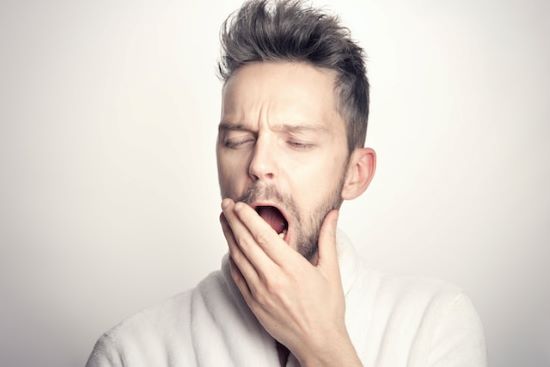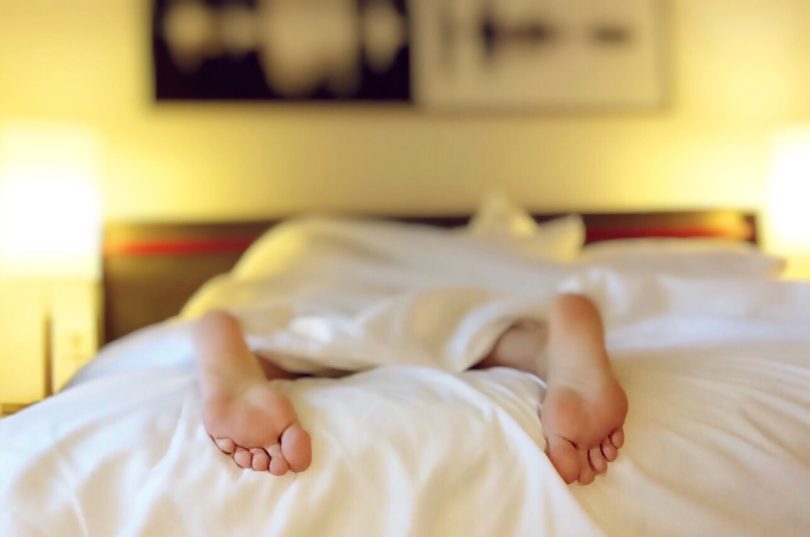The world is finally looking at sleep as a fundamental need to maintain good health. When we sleep, we go through cycles of 90-120 minutes each of these cycles goes through 4 sleep phases, and in each phase, the body and mind go through different processes.

The 4 phases are:
- Non-rapid eye movement (NREM1), during this phase, the body relaxes and starts to fall asleep, this is the transition stage between wakefulness and sleep. We spend approximately 5% of our sleep time in this phase.
- Non-rapid eye movement (NREM2), during this stage, our body slows down, our heart rate and temperature drop, and we are asleep. We spend approximately 45% of our sleep time in this phase.
- Non-rapid eye movement 3 (NREM3), during this phase our muscles relax, our blood pressure and breathing rates drop, and we are in a deep sleep. During this phase our cells renew, our memories are consolidated, our immunity is strengthened, and our hormones are regulated. We spend approximately 25% of our sleep time in this phase.
- The final stage of sleep is Rapid eye movement (REM) sleep. During this phase, our brain processes new information and increases our mental concentration and mood/emotional regulation. We spend approximately 25% of our sleep time in this phase.
Insomnia is a worldwide issue that is increasing.
The incident rates for Insomnia have increased at a rate of approximately 6% in women and men, in the past 10 years. On average 30-50% of the population experience insomnia symptoms, and up to 15% develop Chronic Insomnia. (4,5)

Throughout our lives, we all suffer from acute Insomnia due to life events, but when Insomnia becomes chronic it becomes more of a psychological issue, it has been referred to as a ‘sleep phobia’. People suffering from insomnia often dread going to bed and this increases their anxiety levels, raising their cortisol level (our stress hormone) which suppresses the production of natural melatonin (our sleep hormone).
The anxiety around not being able to sleep maintains the issue and it becomes an ever-increasing cycle of not sleeping and becoming more anxious.
The criterion for chronic Insomnia is when sleep is disturbed 3 or more nights a week, over a period of 3 months or more.
People suffering from Insomnia have varying degrees of being able to manage in everyday life. Car accidents have been linked to Insomnia as have work-related accidents. Levels of concentration are diminished, and emotional regulation suffers.

In general, people suffering from Insomnia will start asking the advice of others, download sleep Apps, try essential oils, listen to podcasts, and research sleep hygiene techniques. Good sleep hygiene and a good routine if implemented early enough can be effective in treating acute insomnia.
Visiting the doctor for sleep medication is often the next step. Prescription drugs that are prescribed for Insomnia are often sedative-hypnotic drugs benzodiazepines or non-benzodiazepines that are known as ‘Z-drugs. These medications are not recommended for long-term use due to the potential for addiction, and unwanted side effects. Medications which include antidepressants, antipsychotics, and some antihistamines are also prescribed for Insomnia, all of which present with side effects and research has shown are not long-term solutions for Insomnia. (3) Many medications that are prescribed for short-term insomnia change sleep architecture, one of the dangers of this is that Rapid Eye Movement sleep is often affected, and this is the stage of sleep that we need the most to emotionally regulate.
Triggers for Insomnia are most frequently psychological therefore a psychological approach to treatment is required. (5). Up to 50% of people suffering from insomnia mention a trigger, have a history of poor sleep, or have a family history of issues sleeping. (5)
Cognitive Behaviour Therapy for Insomnia
The number one gold standard for the treatment of Insomnia is Cognitive behaviour therapy for Insomnia (CBTi) the World Sleep Society has endorsed this treatment and research has proven its success over the use of pharmaceutical interventions. (3)

Cognitive behaviour therapy for insomnia consists of several elements including:
- Sleep education – education around sleep architecture and the sleep process.
- Sleep hygiene – rules around sleep-related habits and environmental factors.
- Sleep rescheduling –prescribed sleep period, which the therapist calculates using the information gathered and analysis of weekly sleep diaries, this aims to increase homeostatic sleep pressure. This also reduces variability in sleep times.
- Stimulus control – consists of rules about what to do when waking during the night, or before desired wake-up time. This also strengthens the relationship between the bed and sleep.
- Cognitive restructuring – consists of working through the cognitive bias about sleep, and changing behaviour that is prolonging the insomnia.
- Relaxation training – consists of education around relaxation techniques to help initiate sleep and reduce anxiety. (1,2)
The therapy duration is 4-8 weeks. CBTi therapy is effective and has a high success rate in those who have undergone it. According to The Sleep Foundation 2023 the success rate of improving primary insomnia is 70-80%.
The delivery of Cognitive behaviour therapy for Insomnia should be through a fully trained therapist who is also trained in Sleep medicine, as at times Insomnia may be due to underlying sleep disorders such as Obstructive Sleep apnea, Restless Leg Syndrome, REM sleep disorders, etc… that have been unrecognized by the person with Insomnia. During the CBTi first session, the therapist examines all the possible underlying causes of insomnia, and a full analysis of a person’s medical history and symptoms are explored before proceeding with the therapy. If there is a suspicion that there may be an underlying sleep disorder the therapist will recommend that the person goes to their doctor for further tests or a referral to a sleep clinic for further investigation.

As insomnia can start with a trigger or have a bi-directional relationship with another comorbidity, at times different treatments will be recommended. However, where there is an illness, condition, or chronic disease insomnia should always be treated as soon as possible as the body does not recover without sleep. You have nothing if you don’t have good health.
References
- Riemann D, Baglioni C, Bassetti C, Bjorvatn B, Dolenc Groselj L, Ellis JG, Espie CA, Garcia-Borreguero D, Gjerstad M, Gonçalves M, Hertenstein E, Jansson-Fröjmark M, Jennum PJ, Leger D, Nissen C, Parrino L, Paunio T, Pevernagie D, Verbraecken J, Weeß HG, Wichniak A, Zavalko I, Arnardottir ES, Deleanu OC, Strazisar B, Zoetmulder M, Spiegelhalder K. European guideline for the diagnosis and treatment of insomnia. J Sleep Res. 2017;26(6):675-700.
- BassettiC, McNicholas W, PaunioT, Peigneux P. Editors. Sleep Medicine Textbook, 2nd Ed. 2021. European Sleep Research Society (ESRS), Regensburg, Germany. Chapter C:218-292.
- Renee Campbell, Isabelle Chabot, Ben Rousseau, Daisy Bridge, Gillian Nicol & Genevieve Meier (2021): Understanding the unmet needs in insomnia treatment: a systematic literature review of real-world evidence, International Journal of Neuroscience, DOI: 10.1080/00207454.2021.1995383
- Franziska Klimt, Clara Jacobi, Elmar Brähler, Yve Stöbel-Richter, Markus Zenger, Hendrik Berth. Insomnia symptoms in adulthood. Prevalence and incidence over 25 years, Sleep Medicine, Volume 109,2023, Pages 240-244.
- Fietze I, Laharnar N, Koellner V, Penzel T. The Different Faces of Insomnia. Front. Psych. 2021;29(12):683943.
Main – Photo by Pixabay



